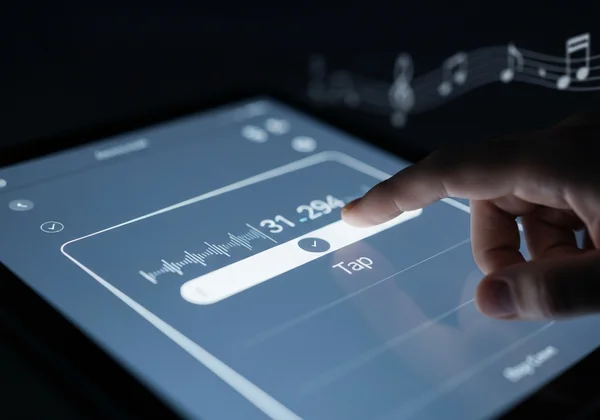Learn Songs by Ear with a Free Online Metronome: Tap Tempo to Master Rhythm
Ever dreamed of unlocking a song's secrets just by listening? It’s that magic ability to hear a melody and instantly know how to play it, to feel a groove and replicate it perfectly. But how do you accurately capture a song's tempo and intricate rhythms without sheet music? This guide will show you how our learn songs by ear process becomes effortless with the right tools. The "Tap Tempo" feature on our free online metronome is your ultimate key to deciphering any song, helping you find its exact BPM and master its rhythmic complexities, even if you're just starting out.
Unlock Any Song's Tempo: A Tap Tempo Guide
Before you can play a song, you need to understand its pulse. Finding the Beats Per Minute (BPM) is the first and most critical step in learning music by ear. It’s the foundation upon which every note and rhythm is built. Forget guessing or feeling lost; a precise tempo is just a few taps away.
What is Tap Tempo and Why is it Essential for Musicians?
Tap tempo is your secret weapon for nailing any song's speed. Just tap along with the music, and our metronome instantly finds the perfect BPM for you! Instead of manually adjusting a slider or typing in numbers, you tap along to the beat, and the tool calculates the precise BPM for you. For musicians learning by ear, this is a game-changer. It bridges the gap between what you hear and what you can practice. It eliminates guesswork, ensuring the tempo you practice at is the actual tempo of the song, making the entire learning process more efficient and accurate.

Step-by-Step: How to Accurately Use Our Online Metronome's Tap Tempo
Ready to find the BPM of your favorite track? Our intuitive tool makes it incredibly simple. Follow these steps to get a precise reading in seconds:
- Open the Tool: Navigate to the MetronomeOnline.org homepage. You'll see the metronome interface ready to go, with the "Tap" button clearly visible.
- Listen to the Song: Play the song you want to learn. Focus on the core rhythm. The kick drum and snare are often the most consistent elements to follow.
- Start Tapping: As you listen, begin tapping the "Tap" button along with the beat. Tap on every quarter note (1, 2, 3, 4).
- Keep it Steady: Continue tapping for at least 15-20 seconds. The longer and more consistently you tap, the more accurate the BPM reading will become as the algorithm averages out your taps.
- Note the BPM: The display will show the calculated BPM. You now have the exact tempo you need to start practicing!
Tips for Accurate BPM Detection and Common Pitfalls
To ensure you get the most accurate result, keep these pro tips in mind. Accurate BPM detection is key to a solid practice session.
- Focus on the Core Beat: Don't tap along to complex melodies or fast fills. Lock into the main pulse of the song, usually carried by the drums or bass.
- Use a Good Audio Source: Listen on headphones or quality speakers to hear the beat clearly.
- Avoid Rushing or Dragging: Try to stay perfectly on top of the beat, not ahead or behind it.
- Tap Through a Full Phrase: Tapping through a full verse or chorus helps maintain consistency and provides a more reliable average.
- Common Pitfall: Tapping to a syncopated or off-beat rhythm. If the BPM seems double or half of what you expect, you might be tapping to eighth notes instead of quarter notes. Try again, focusing on the main "one-two-three-four" count.
Beyond BPM: Mastering Rhythm for Perfect Transcription
Once you have the tempo, the real work begins: transcribing the rhythms and melodies accurately. This is where a powerful metronome becomes more than just a BPM counter; it becomes your personal music transcription tool. It provides the unwavering grid you need to place every note precisely where it belongs.
Setting Your Metronome to Practice Difficult Sections
Every musician knows that one tricky passage that trips them up. The secret to mastering it is to slow it down—way down. After you find the BPM, set our metronome to half that speed. By practicing the section slowly and perfectly, you build accurate muscle memory. This methodical approach, known as slow practice, is impossible without a reliable metronome to keep you honest. As you get comfortable, gradually increase the tempo by 5-10 BPM at a time until you reach the song's original speed.
Breaking Down Complex Rhythms with Subdivisions and Accents
What makes a rhythm feel "complex"? Often, it's those tricky subdivisions—notes played between the main beats, like eighth notes, sixteenth notes, or triplets. Our online metronome allows you to enable subdivisions, providing clicks for these smaller rhythmic values. Hearing the sixteenth-note grid while trying to learn a funky guitar riff, for example, makes it infinitely easier to place each note correctly. Furthermore, you can use the accents feature to emphasize the first beat of each measure, helping you stay aware of the downbeat and understand the song's time signature.

Practicing Syncopation and Groove for Authentic Performance
Syncopation—placing emphasis on the off-beats—is the soul of genres like jazz, funk, and pop. Practicing syncopated rhythms with a straight metronome click forces you to develop a strong internal clock. You learn to feel where the downbeat is, even when you're not playing on it. This skill is crucial for developing a compelling groove and moving beyond robotic, mechanical playing. Use our rhythm practice tool to set a solid foundation, then practice playing around the beat to give your performance that authentic, human feel.
Integrate Ear Training: Learning Songs by Ear with a Metronome
Using a metronome isn’t just about playing in time; it’s a fundamental part of comprehensive ear training. It trains your brain to recognize and internalize rhythmic patterns, which is a cornerstone of learning music by ear. It provides the structure needed to make sense of the music you hear.
Developing Your Internal Clock for Better Ear Training
Your internal clock is your innate sense of time and rhythm. The more you practice with a metronome, the stronger it becomes. A well-developed internal clock allows you to listen to a song and instantly grasp its rhythmic framework without conscious effort. You'll start to hear rhythms not as a random collection of notes, but as organized patterns built on a steady pulse. This is a superpower for any musician, and consistent practice with our powerful tool is the most direct way to develop it.

From Slow Practice to Performance Tempo: The Incremental Approach
The journey from hearing a lick to performing it flawlessly is built on an incremental foundation. The process is simple but incredibly effective:
- Use Tap Tempo to find the song's performance tempo.
- Set the metronome to a very slow speed where you can play the part perfectly, even if it feels ridiculously easy.
- Play it correctly multiple times in a row.
- Increase the speed by a small amount (5 BPM).
- Repeat until you are back at the original tempo, playing with confidence and precision.
This methodical approach guarantees you're building rock-solid technique—and you won't practice a single mistake along the way.
Identifying Time Signatures and Song Structure by Ear
A metronome can even help you identify a song's time signature. By setting the accent on the first beat, you can listen for where that strong pulse falls in the music. Does it feel like a "ONE-two-three, ONE-two-three" waltz pattern? You're likely in 3/4 time. Does it have a classic "ONE-two-three-four" rock beat? That’s 4/4. Recognizing these foundational structures is a massive step forward in your ear training journey and overall musical understanding.

Your Journey to Rhythmic Mastery Begins Now
Learning to play songs by ear is not magic; it’s a skill that can be developed with the right tools and a structured approach. From discovering a song's exact tempo with a simple tap to breaking down its most complex rhythms, our free online metronome is your dedicated partner in this journey. You now have the roadmap to deconstruct any piece of music and make it your own.
Don’t let another song intimidate you. It’s time to turn your listening skills into playing skills. Start your practice on our free, powerful online metronome today and begin your journey to rhythmic mastery.
FAQ Section
How do I find the BPM of a song?
The easiest way is to use a Tap Tempo tool. Play the song and tap the beat on the designated button on our website. The tool will automatically calculate the Beats Per Minute (BPM) for you. For the most accurate result, tap along to a consistent rhythmic element like the kick drum for 15-20 seconds.
What is a good tempo for practice?
A "good" tempo is one where you can play a passage perfectly without mistakes. For learning new or difficult sections, start at a very slow speed (often 50-60% of the final tempo). The golden rule is: if you're making mistakes, you're going too fast. Use our metronome to find a comfortable starting point and gradually work your way up.
How can a metronome improve my playing?
A metronome is the single most effective tool for improving your rhythm and timing. It provides an objective, steady pulse that helps you develop a strong internal clock, play with precision, master complex rhythms, and build speed accurately. Consistent practice with a tool like ours will make your playing sound more professional and confident. Try our metronome to feel the difference.
Can I learn complex rhythms with a free online metronome?
Absolutely. A professional-grade online metronome, like our professional-grade online metronome, includes advanced features such as subdivisions (eighths, sixteenths, triplets) and accents. These features are essential for breaking down and mastering complex rhythmic patterns found in genres like funk, jazz, and progressive rock.
Is Tap Tempo accurate enough for professional use?
Yes, when used correctly. Our Tap Tempo feature uses an advanced algorithm to average your taps, providing a highly accurate BPM reading. While a human tap will always have minuscule variations, tapping consistently for 15-20 seconds yields a result that is more than accurate enough for professional practice, transcription, and even setting up tempos for live performance. It's a trusted method used by musicians and producers worldwide to perfect your timing.